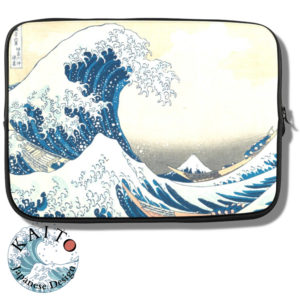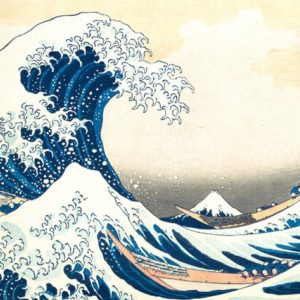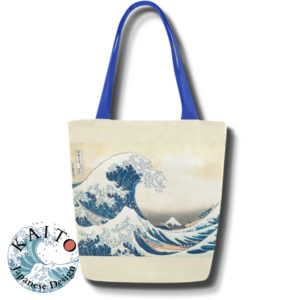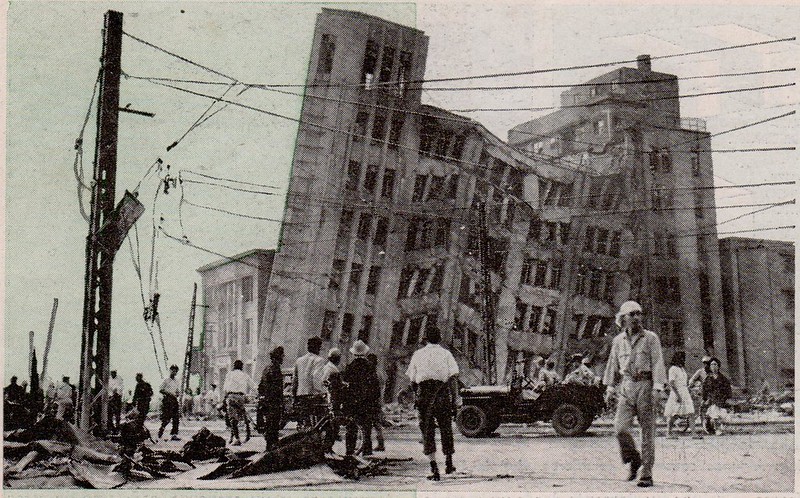A noticeable recession of water along the shore sends an urgent warning – a tsunami is coming. Movements on the ocean floor send a series of waves that are known for bringing potential damage to life in the ocean and near the coastline. While the phenomenon is experienced around the world, it is also recognized as a term found in the Japanese vocabulary. Looking back, the history of tsunamis can be found in the writings etched into journal entries about volcanic eruptions and earthquakes. Find out how the word came to be and turned into a cultural subject that leaves many in awe.
Tsunami… What’s in a Word?
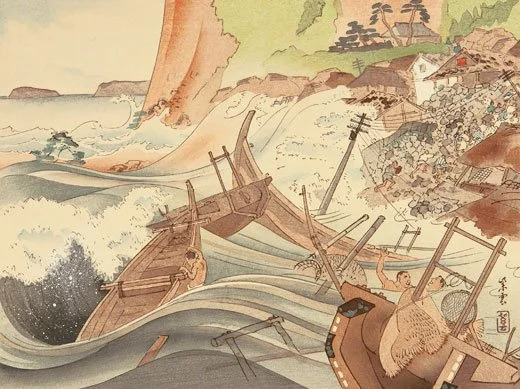
A tsunami was often mistaken with different terms in the English language. A term used for it was “tidal wave” in older English as it resembles the occurrence of a tide where the sea also recedes from the shore. However, it was noted that these two phenomena have different origins. A tidal wave is caused by the gravitational influence of the sun and moon, whereas, the source of a tsunami comes from processes that suddenly change the elevation of the depth of water. Another term used for it was “seismic sea wave”, but this was too limiting since an earthquake is not the only event that triggers a tsunami. Volcanic eruptions and landslides can also cause tsunamis to happen.
Similar words synonymous with tsunami were also employed in Japan. Terms such as onami (large wave), shikai namisu (waves rise in all directions), takanami (high wave), takashio (high tide), and kaisho (roaring and resounding sea) were also related to large waves and flooding.
These were finally replaced in favour of the official term, tsunami, which means waves (波 or nami) breaking upon a harbour (津 or tsu). It first occurred in the journal of shogun Tokugawa Ieyasu. He mentioned the term when he wrote about the Sanriku earthquake that took place on December 2, 1611:
Matsudaira Masamune, Lord of Mutsu, presents the first cod of the season [to Ieyasu]. On this occasion, it transpired that Masamune’s land by the sea was hit by towering waves and all properties were lost. 5000 died of drowning. People call it a tsunami…
The association of the word tsunami with earthquakes has made it quite distinct from the others. Japan frequently experiences earthquakes and volcanic activity due to its geographical location on the edge of the Pacific.
Anecdotes from the Past
The group of people who called it a tsunami was not clearly identified. Even the West knew the term at its birth as described in a record by Sebastiàn Vizcaíno in Japan during an expedition:
…Thinking they were fleeing from us, we called after them to stop, but then we saw the reason was that the sea came to a height of more than a pica [1 pica = 3.89 m], caused by a great earthquake. It carried on for an hour with such power, inundating the village and washing away the houses and rice fields, which floated on the water, wreaking confusion. The sea water ebbed and flowed three times in this interval, and the inhabitants could not save their properties, nor many their lives…
The term tsunami was made known to English speakers because of two foreign journalists who spent a significant time of their lives in Japan. Eliza Ruhamah Scidmore reported about the tsunami that hit Hondo, Japan in the National Geographic magazine:
On the evening of June 15, 1896, the north-east coast of Hondo, the main island of Japan, was struck by a great earthquake wave (tsunami), which was more destructive of life and property than any earthquake convulsion of this century in that empire…
Meanwhile, Lafcadio Hearn also wrote a narrative about the subject in The Atlantic Monthly. It was during the second half of the twentieth century that the term was formally recognized in the scientific literature in English:

From immemorial time the shores of Japan have been swept, at irregular intervals of centuries, by enormous tidal waves,—tidal waves caused by earthquakes or by submarine volcanic action. These awful sudden risings of the sea are called by the Japanese tsunami… For that long darkness was the returning sea, towering like a cliff, and coursing more swiftly than the kite flies. ‘Tsunami!’ shrieked the people; and then all shrieks and all sounds and all power to hear sounds were annihilated by a nameless shock heavier than any thunder, as the colossal swell smote the shore with a weight that sent a shudder through the hills.
Ukiyo-e was a prevalent genre in art during the Edo period. Art during these times was restricted to ornamental themes, leaving out the miseries experienced in the world. However, Japan has incorporated natural disasters into its material culture. Tsunamis became a popular subject of artists in block prints, paintings, and drawings.
An iconic piece is Katsushika Hokusai’s Great Wave off Kanagawa, which is often thought of as a depiction of tsunami waves. It actually gives a view of the infamous Mount Fuji behind boats battling through storm waves.

A book illustration to Ansei Kenmonroku was drawn as a record of the tsunami that occurred after the 1854 Ansei Nankai earthquake.
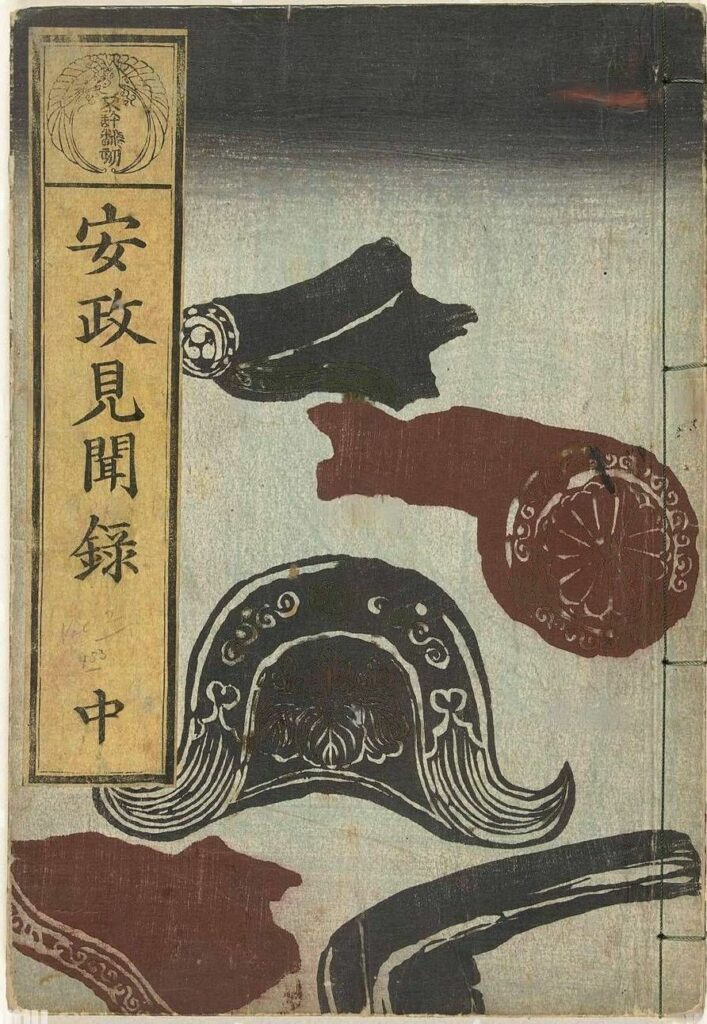
The Japanese mythology Namazu also inspired a craze for namazu-e pictures. Namazu is a giant underground catfish whose movements are believed to be responsible for earthquakes.

The tsunami also made its way into literary works. Topics on tsunamis were read in a disposition under teinen (resignation), a Buddhist teaching that led people to accept the aftermath of an earthquake without wondering about its cause. This can be observed in Hojoki, an essay written by Kamono Chomei in reference to the Kyoto earthquake of 1185.
Tsunamis were also a part of the written history of the West. Europeans started documenting tsunamis even before the Japanese, though it became virtually unknown to them for a long time. Excerpts of literature show how they were depicted in Greek mythology.
Hesiod’s Theogony gave a possible reference to a tsunami while depicting Zeu’s victory over Typhoeus:
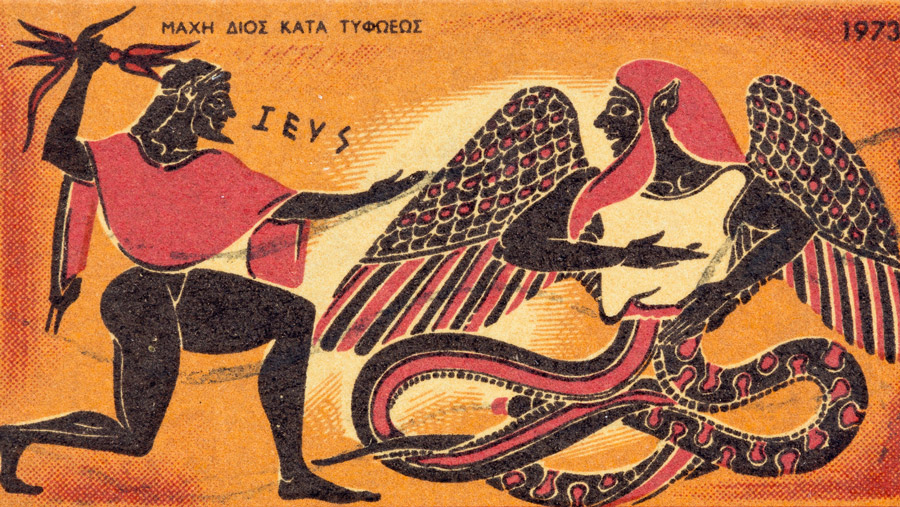
…and the earth around resounded terribly and the wide heaven above, and the sea and Ocean’s streams and the nether parts of the earth. And through the two of them heat took hold on the dark-blue sea, through the thunder and lightning, and through the fire from the monster, and the scorching winds and blazing thunderbolt. The whole earth seethed, and sky and sea: and the long waves raged along the beaches round and about, at the rush of the deathless gods: and there arose an endless shaking…
Neptune’s anger from Ovid’s Metamorphoses was likened to the event of a tsunami:

And Neptune with his trident smote the Earth, which trembling with unwonted throes heaved up the sources of her waters bare; and through her open plains the rapid rivers rushed resistless, onward bearing the waving grain, the budding groves, the houses, sheep and men,—and holy temples, and their sacred urns.










































